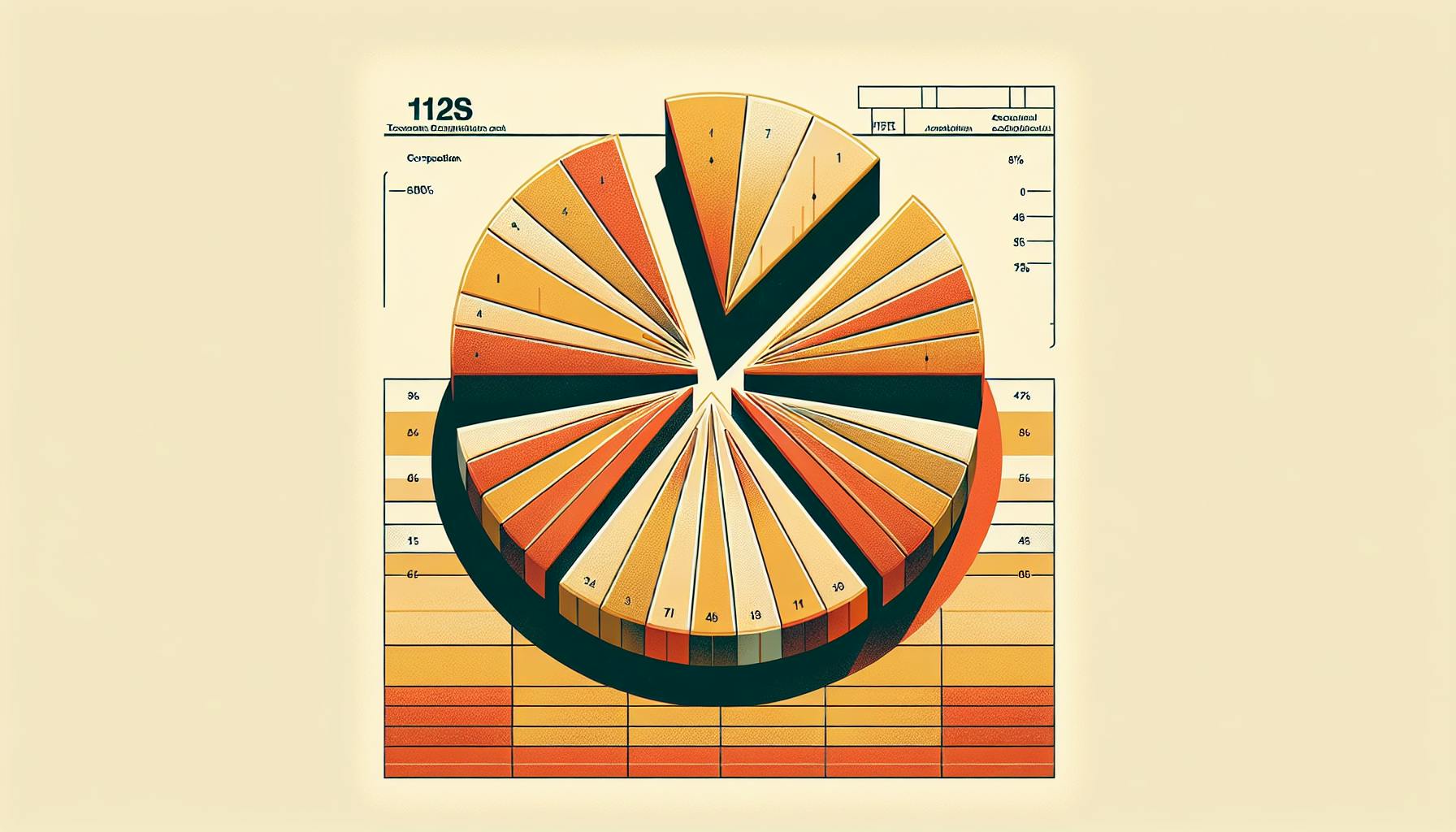Reporting the sale of business property can be confusing for many taxpayers.
By following the step-by-step instructions in this guide, you'll clearly understand how to fill out IRS Form 4797 to report these transactions properly.
You'll learn what type of property sales must be reported on Form 4797, how to calculate any gains or losses, where to report different transactions on the form, as well as tax implications and other special rules to be aware of.
Introduction to Form 4797: Sales of Business Property
Form 4797 is used to report the sale or exchange of property used in a trade or business, for the production of income, or as rental property. This includes reporting capital gains and losses as well as recaptured depreciation, which is treated as ordinary income.
The key purpose of Form 4797 is to differentiate between capital gains/losses and ordinary income, as they are taxed at different rates. Any gains on the sale of business assets held longer than a year are long-term capital gains, taxed at lower rates compared to ordinary income. Meanwhile, recaptured depreciation and gains on assets held a year or less are taxed as ordinary income.
Properly categorizing these transactions is essential to calculate the correct amount of tax owed. Form 4797 allows you to report section 1231 transactions, sales of section 1245/1250 property, and sales of ACRS/MACRS property in the appropriate categories. It also indicates which transactions should be reported on supporting schedules such as Form 8949 and Schedule D.
Understanding the nuances of Form 4797 is key for any taxpayer selling business assets or rental property. This form helps you pay the right amount of capital gains tax while recapturing any claimed depreciation deductions. Consult the instructions carefully when preparing your return.
How do you report the sale of business assets?
You report the sale or exchange of business assets on Form 4797, Sales of Business Property. Here are some key things to know about using Form 4797:
What to Report on Form 4797
Use Form 4797 to report:
- The sale or exchange of property used in your trade or business
- The involuntary conversion (from theft, destruction, etc.) of property used in your trade or business and capital assets
- The disposition of noncapital assets other than inventory or property held primarily for sale to customers
Some examples of transactions to report on Form 4797 include:
- Selling or exchanging buildings, land, machinery, or equipment used in your business
- An involuntary conversion due to a casualty event like natural disaster or theft
- Selling goodwill or other section 197 intangibles
Instructions for Filling Out Form 4797
When filling out Form 4797:
- Report section 1231 gains and losses in Part I
- Report gains and losses from casualty and theft in Part II
- Report recapture amounts for section 179 or 280F(b)(2) in Part III
- Indicate the correct asset class (e.g. 1245 property, 1250 property, etc.)
Attach your completed Form 4797 to your tax return (Form 1040). The totals carry over to Schedule D to determine capital gains and losses.
Be sure to follow the instructions for Form 4797 closely when reporting your transactions. Record the proper dates, amounts, and asset types and indicate any applicable special rules. Proper reporting on Form 4797 ensures your business asset dispositions are treated correctly on your tax return.
Is sale of business property a capital gain?
The sale of capital assets held for more than one year generally results in long-term capital gain or loss. When you sell real property or depreciable property used in your business and held longer than 1 year, it results in gain or loss from a section 1231 transaction.
Some key points on section 1231 transactions:
- They involve the sale or exchange of real or depreciable business property held longer than 1 year
- The net gain from all section 1231 transactions for the year is treated as long-term capital gain
- The net loss is treated as an ordinary loss
If you sell business property like equipment, furniture, buildings, or land at a gain, it will likely qualify as a section 1231 transaction. The gain would be taxed at the lower long-term capital gains rate.
However, if the property is inventory or held for sale to customers, the gain would be taxed at ordinary income tax rates instead. Also, recaptured depreciation on section 1245 property (personal tangible property) and section 1250 property (real property) results in ordinary gain tax treatment.
So in summary, selling capital assets used in business generally produces capital gain or loss if held over one year. But special rules apply in some cases, such as for inventory, property held for sale, and recaptured depreciation.
Where on form 4797 sales of business property would the sale of the driveway be reported?
The sale of a driveway would typically be reported on Page 2, Part 3 of IRS Form 4797, "Sales of Business Property."
Specifically, you would:
-
Report the sale in Part III with the other sales of §1231 assets. Section 1231 assets include depreciable personal property and real property used in a trade or business and held for more than 1 year.
-
Enter the details of the driveway sale on Form 4797, including:
- Description of property
- Date acquired
- Date sold
- Gross sales price
- Depreciation allowed or allowable since acquisition
- Cost or other basis plus expense of sale
-
Calculate the gain or loss on the sale by subtracting the adjusted basis from the sale proceeds
-
Report capital gains or losses from the Form 4797 sale of the driveway on Schedule D.
So in summary, the sale of a business driveway would be reported in Part III of Form 4797, "Sales of Business Property", along with the calculation of the gain or loss. This would then flow into Schedule D to report the capital gain or loss amount from the sale.
Reporting the transaction in this manner allows proper categorization of the sale as a §1231 asset and ensures accurate calculation of gain/loss for tax purposes. The key is using Form 4797 as the mechanism to capture all the required details of the transaction.
What type of property goes on form 4797?
Form 4797 is used to report the sale or exchange of property used in a trade or business, or held for the production of rents or royalties. Some examples of property that would be reported on Form 4797 include:
-
Rental real estate or property - If you sell a rental property like a house or apartment building, the gain or loss would be reported on Form 4797.
-
Depreciable business assets - This includes property like equipment, machinery, furniture, vehicles etc. used in your business. Any gains or losses from selling these types of assets go on Form 4797.
-
Land or buildings used in a business - For example, if you sell land and buildings used in a farming business or a retail store location, Form 4797 is used to calculate and report the tax impact.
-
Natural resource property like oil, gas, or mineral rights - Dispositions of these types of real property assets used in a trade or business also get reported on Form 4797.
So in summary, Form 4797 is intended for reporting sales of business use property that cannot be classified as capital assets. This distinguishes it from capital gain/loss reporting forms like Schedule D, which covers sales of investments and personal use property. The key factor that determines if property should be reported on Form 4797 is if it was used in a trade or business or for the production of income at any time during ownership.
sbb-itb-beb59a9
Determining the Need for Form 4797
Individuals and Sale of Rental Property Example
Individuals may need to file Form 4797 if they sold or exchanged their business, rental, or investment property at a gain or loss during the tax year. For example, if you owned a rental property for 5 years and sold it in 2022 for more than you originally paid for it, you would report that sale on Form 4797.
When you sell a rental property that you depreciated, you may have to recapture some or all of the depreciation as ordinary income, even if you sold at an overall loss. The sale of rental property should be reported in Part III of Form 4797.
Partnerships and S-Corporations Reporting
Partnerships and S-corporations also use Form 4797 to report the sale or exchange of property used in their trade or business and other capital assets. This includes section 1231 transactions like sales of real estate or equipment used in business operations.
The partnership or S-corp files Form 4797 with their business tax return. The gain or loss then flows through to the partners or shareholders to report on their individual tax returns. Partners and shareholders with passive income may be subject to loss limitation rules.
Form 4797 vs Schedule D
The main difference between Form 4797 and Schedule D is that Schedule D is used to report capital gains and losses from the sale of capital assets held for personal investment. Form 4797 is used to report sales of assets used in your trade or business or for the production of rents and royalties.
So if you sell stocks and bonds for investment purposes, you would use Schedule D. If you sell business equipment, rental property, land, or other section 1231 property, you would use Form 4797. The totals from Form 4797 get carried over to Schedule D to determine total capital gains and losses.
Filing Deadlines and Extensions
The deadline to file Form 4797 is the same as your tax return deadline, which is typically April 15 for most taxpayers. However, you may qualify for an automatic 6-month extension by filing Form 4868 by the April deadline. This extends your Form 4797 deadline to October 15.
Some key points on Form 4797 filing deadlines and extensions:
- File by April 15 to avoid late filing penalties. If you owe taxes, penalties and interest start accruing after April 15.
- You can receive an automatic 6-month extension to October 15 by filing Form 4868. This only extends your time to file, not your time to pay taxes owed.
- Special deadlines may apply if you are living abroad or serving in the military overseas.
- Disaster extensions may be available if you reside or have a business in a federally declared disaster area.
Even with an extension, it is wise to file Form 4797 as early as possible once you have the necessary documentation. This allows more time for the IRS to process your return and issue any refunds. It also gives you more time to respond if the IRS has questions about your reported business property sales.
Having your documentation ready by April 15 and filing on time ensures efficient processing of Form 4797. If you cannot file on time, extensions are available, but penalties and interest will continue accumulating on any unpaid taxes after April 15.
Step-by-Step Instructions for Completing Form 4797
Header Information and Identification
On the top of Form 4797, provide your name, address, social security number, and other taxpayer identification details as requested. This ensures the IRS can properly match the form to your tax return.
Part I: Reporting Section 1231 Transactions
Use Part I to report qualifying asset dispositions, including real property and depreciable personal property used in your trade or business. This includes Section 1231 transactions like sales, exchanges, involuntary conversions, and capital asset conversions.
Calculate and enter your gains and losses from these transactions in the appropriate columns based on the recovery period of the assets. Attach a statement if you need more space.
Part II: Calculating Ordinary Gains and Losses
In Part II, report gains and losses not included in Part I. This includes sales of property held 1 year or less and depreciable personal property.
Use the Form 4797 calculator provided by the IRS to help compute your ordinary gains and losses for each transaction. Enter the results in the appropriate columns.
Attach a Form 8949 and other supporting statements as needed to provide additional details on each transaction.
Part III: Recapture of Depreciation
Part III is used to report depreciation recapture on sales of certain business assets, such as Section 1245 property and Section 1250 property. This recaptured depreciation is taxed as ordinary income.
Carefully determine which section to report your transactions under based on the type of asset sold. Use Part III Section 1245 for recapture on personal property or other tangible assets that were depreciated. Use Part III Section 1250 for recapture on depreciable real property.
Report any recapture on sale of goodwill on the appropriate section line as well. The Form 4797 instructions provide guidance on how to calculate and report the recapture amount.
Attach all supplemental statements to explain your recapture calculations.
Additional Considerations for Sales of Business Property
Reporting the sale of business property can involve other relevant tax forms and rules that may impact the process.
Other Forms You May Have To File
When selling business property, you may need to file additional forms along with Form 4797:
-
Form 8949: Used to report sales and other dispositions of capital assets. Form 4797 refers taxpayers to Form 8949 if the property sold was a capital asset.
-
The key difference between Form 4797 and Form 8949 is that Form 4797 is for selling or exchanging property used in a trade or business or for profit, while Form 8949 is specifically for capital assets.
-
If you sold capital assets used in your business, you may have to file both Form 4797 and Form 8949.
Special Rules and Exceptions
Certain special rules and exceptions may apply when reporting sales of business property:
-
At-Risk Rules: Limit the amount of loss you can deduct to the amount you have "at risk" in the business.
-
Partial Dispositions: Special rules for deducting losses on partial dispositions of assets.
-
Passive Loss Limitations: Limitations on deducting losses from passive trade or business activities.
-
Recapture Provisions: Rules to recapture previously claimed depreciation.
Disposition of Assets and Installment Sales
-
Reporting rules differ depending on whether the disposed assets constitute a trade or business.
-
For installment sales, gain is recognized as payments are received over time rather than all at once.
Sale of Home Used for Business and Involuntary Conversions
-
Special considerations when selling a home used for business purposes.
-
Involuntary conversions occur when property is destroyed, stolen, condemned, or disposed of under threat of condemnation. Special rules apply for reporting involuntary conversions.
Tax Implications and Next Steps After Filing
Calculating Tax Due and Payment
After filing Form 4797 to report the sale of business property, you may owe additional taxes if you had a taxable gain. To calculate the tax owed:
-
Determine your total capital gains for the year by adding short-term and long-term capital gains reported on Form 4797 and Schedule D.
-
Apply the appropriate capital gains tax rates to the total. The rates can vary based on your tax bracket and whether gains were short or long-term. Consult the IRS instructions to identify the rates that apply.
-
Add any tax calculated to the total tax liability reported on your other tax forms. This determines your total tax owed for the year.
-
Pay any tax due by the filing deadline to avoid interest and penalties. You can pay online, by phone, or by check with your tax return.
Record Keeping and Adjusting Cost Basis
It's important to retain documentation related to assets sold using Form 4797 for your records. This includes:
- Purchase paperwork showing original cost basis
- Information on improvements or additions to the property
- Depreciation taken in prior years
Adjust your records to reflect the sale of the property and any new cost basis for replacement property acquired.
Maintaining accurate records makes reporting any future transactions easier and ensures you have support if questions arise later on the tax treatment.
Conclusion: Recap of Form 4797 Filing
Form 4797 is used to report gains and losses from the sale or exchange of business property. Key points to remember:
-
Use Form 4797 to report sales of rental property, depreciable personal property, land and buildings used in a trade or business, goodwill, etc.
-
Report capital gains from these transactions on Form 4797 Part I or Part III.
-
Report ordinary gains and losses on Form 4797 Part II.
-
Transactions with related parties may need special reporting. Consult IRS rules.
-
Use Form 8949 to summarize capital gain and loss transactions that flow to Schedule D and Form 1040.
-
Recordkeeping is critical - keep documents related to your basis and sales price for all business assets sold.
Accurately categorizing and reporting gains and losses from sales of business property can be complex. Refer to IRS instructions and Publication 544 for additional guidance if needed. With proper planning and understanding of the rules, business owners can reduce their tax burden when selling business assets.




